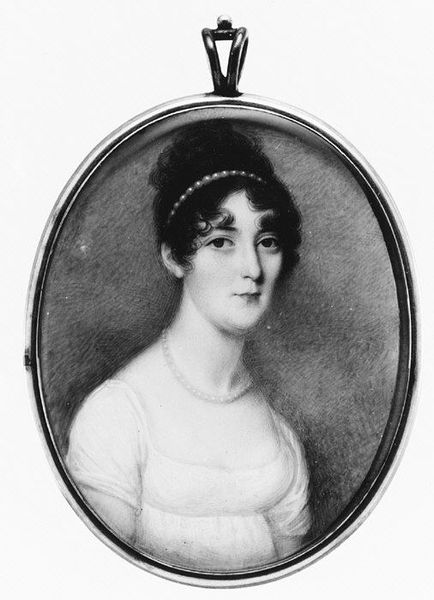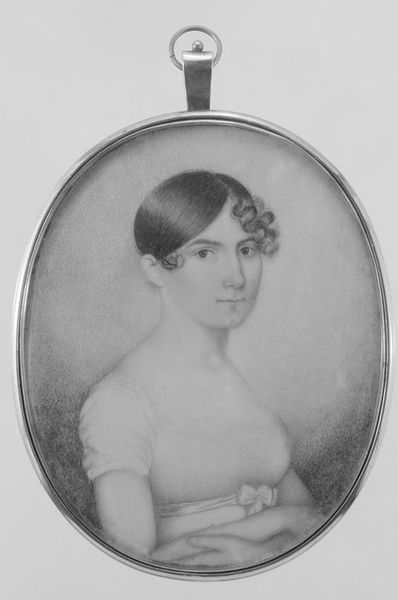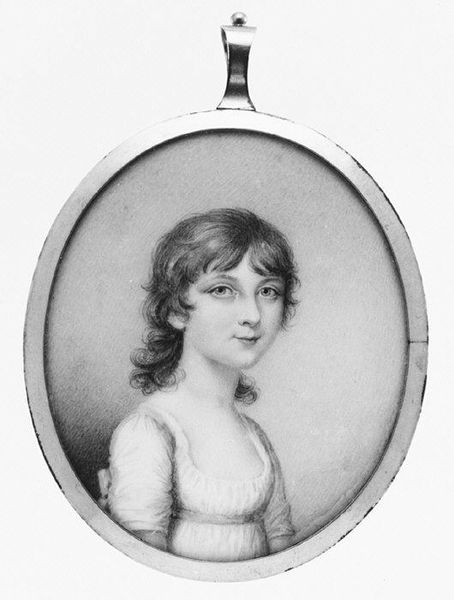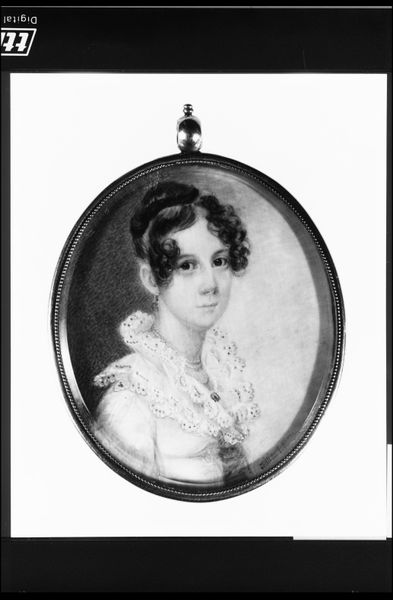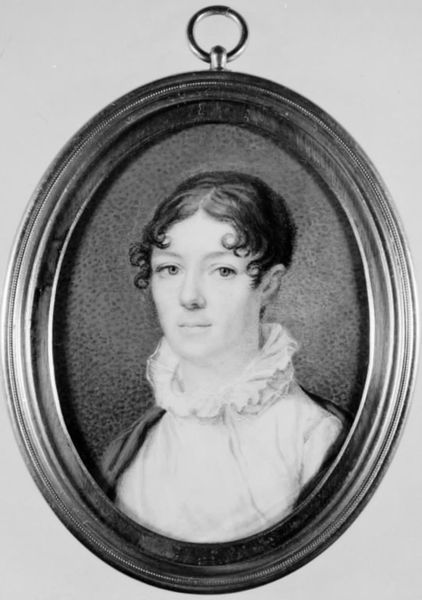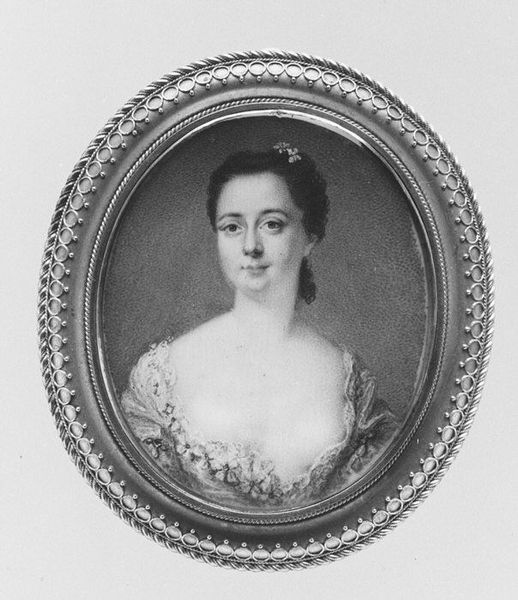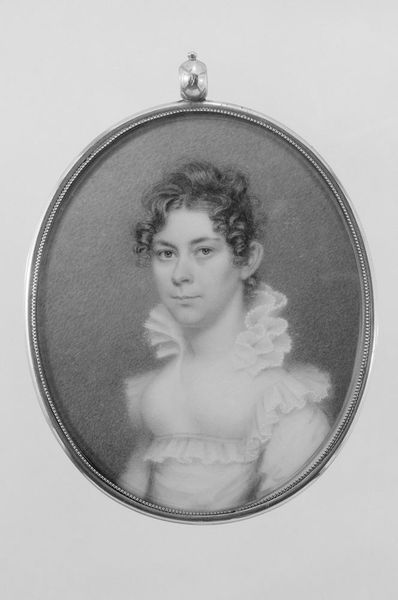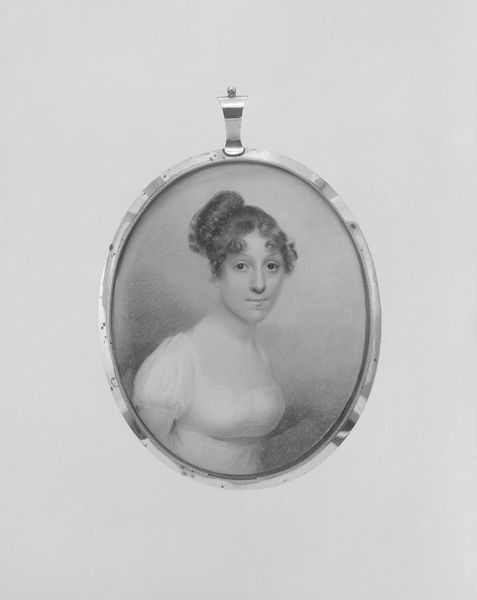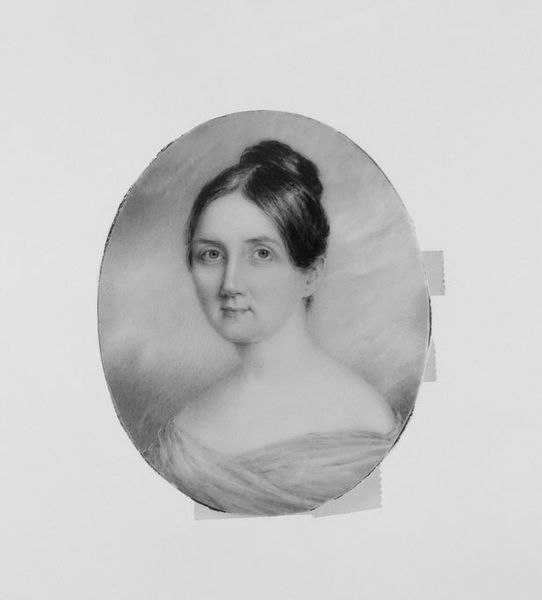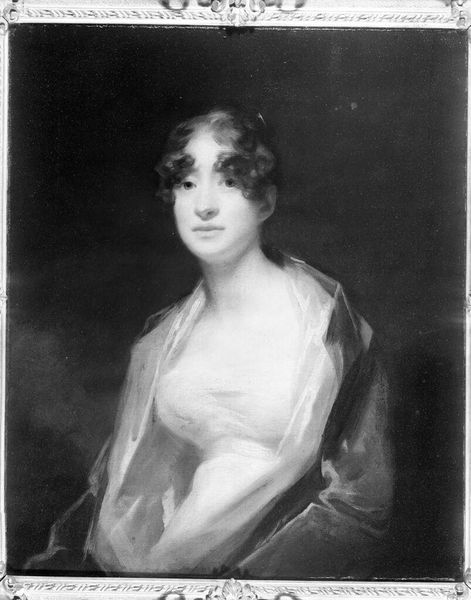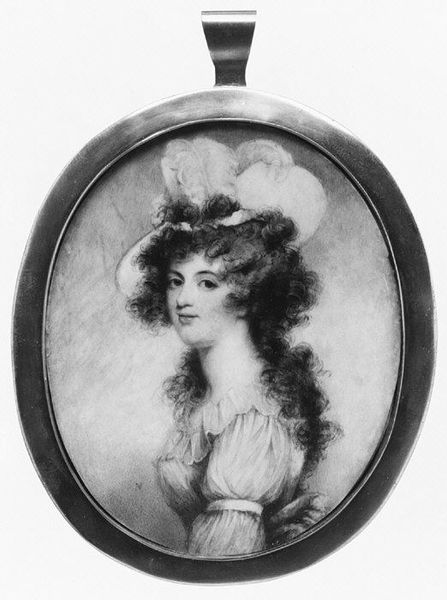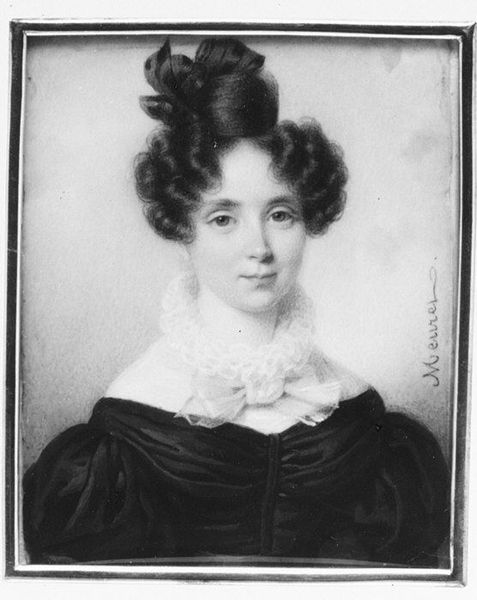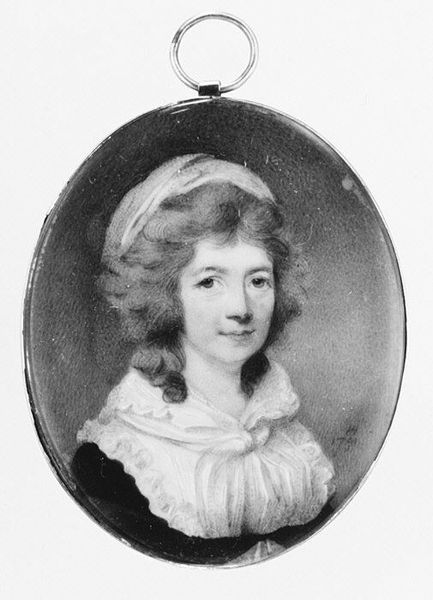
drawing, paper, ink
#
portrait
#
drawing
#
neoclacissism
#
still-life-photography
#
portrait
#
figuration
#
paper
#
ink
#
romanticism
#
black and white
#
miniature
#
realism
Dimensions: Oval, 3 x 2 1/4 in. (75 x 57 mm)
Copyright: Public Domain
Curator: This is "Elizabeth Bushby," a miniature portrait rendered in ink on paper by Andrew Plimer, dating back to 1804. Editor: What strikes me is how contained yet evocative it is. The monochrome palette gives it a sense of austerity, but her expression hints at something more complex, a quiet defiance perhaps? Curator: I'm interested in the materials and process involved in creating such an intimate object. Plimer would have painstakingly built up the image with layers of fine lines and washes, the labour intensive method resulting in an object that would have been cherished, passed between family members and loved ones. Editor: Exactly! It’s not just an image, but a carefully crafted object of social and familial importance. Consider the sitter, Elizabeth Bushby, situated within a society that prescribed very specific roles for women. The portrait then becomes a vehicle for exploring issues of identity and representation. Was this a commissioned piece intended to solidify social standing or did it act as a form of personal memorial? Curator: The lack of colour forces one to look more closely at the nuances of line and shading, the visible evidence of the artist’s hand. What does it mean to depict someone with such starkness in contrast to the opulent lifestyles often associated with portraiture? It's fascinating to ponder the economics of such commissions. Who were Plimer's patrons and what access did ordinary folk have to such craftsmanship? Editor: And what is she *not* telling us? Think about the power dynamics at play. While Plimer's technical skill is evident, so is the implied gaze of the male artist representing a female subject, how do we unpack the dynamics of subject/object in terms of control? Curator: The almost jewel-like quality of the miniature invites questions around commodity and display - How accessible would this object have been, where might it have been kept and worn, if at all? Editor: Absolutely. Examining miniatures as commodities is fascinating; objects that spoke to shifting social structures while perhaps upholding existing structures of privilege. This is where we might consider not just her individual likeness but wider societal power relations inherent to portraiture during the period. Curator: These miniatures serve as vital insights into material culture, acting as valuable entry points to broader socioeconomic histories. Editor: It truly exemplifies the powerful ways in which art engages with personal stories alongside critical cultural discourses.
Comments
No comments
Be the first to comment and join the conversation on the ultimate creative platform.
